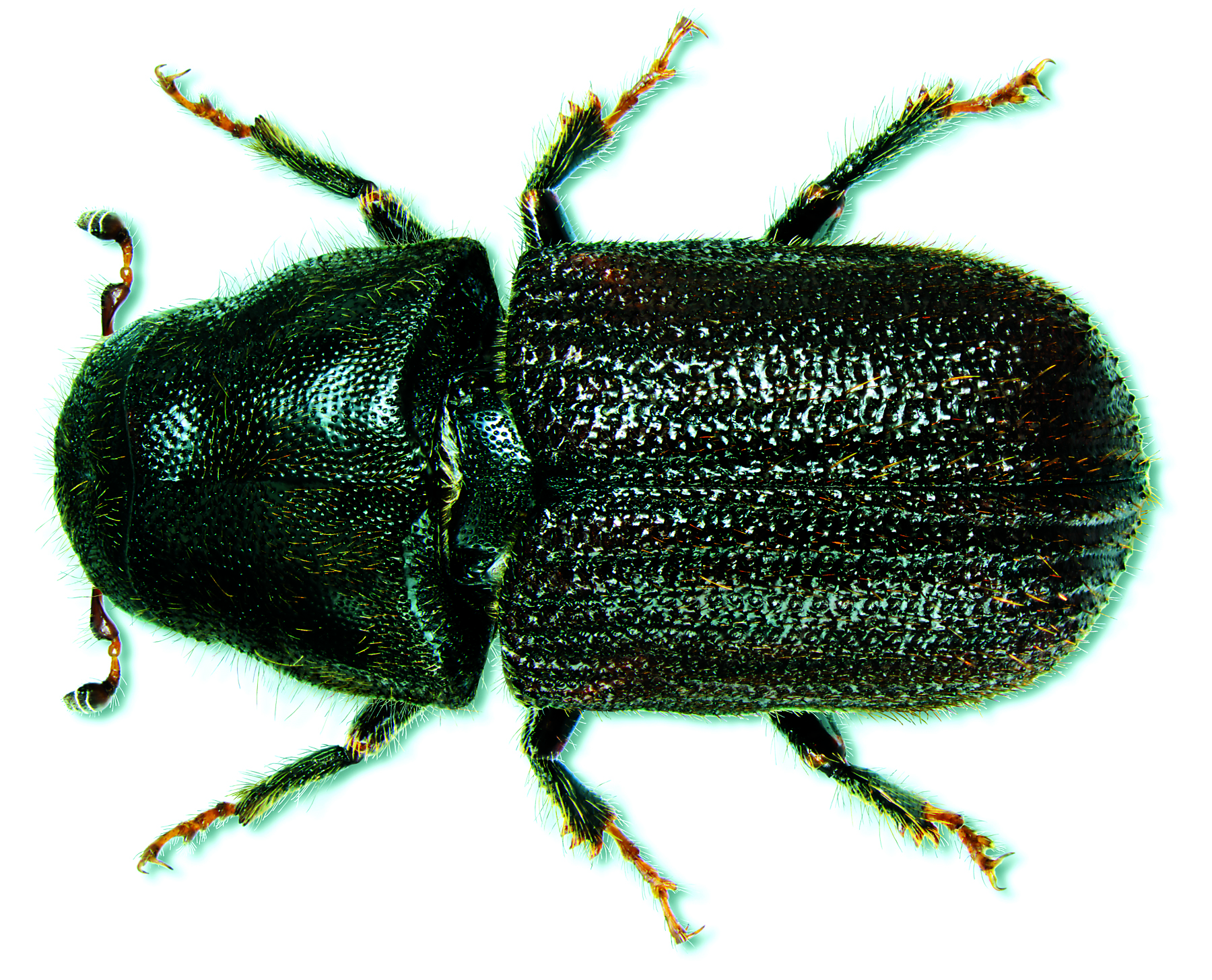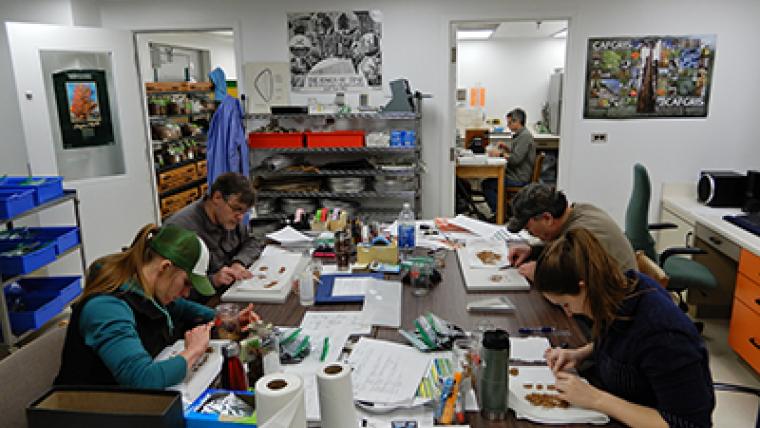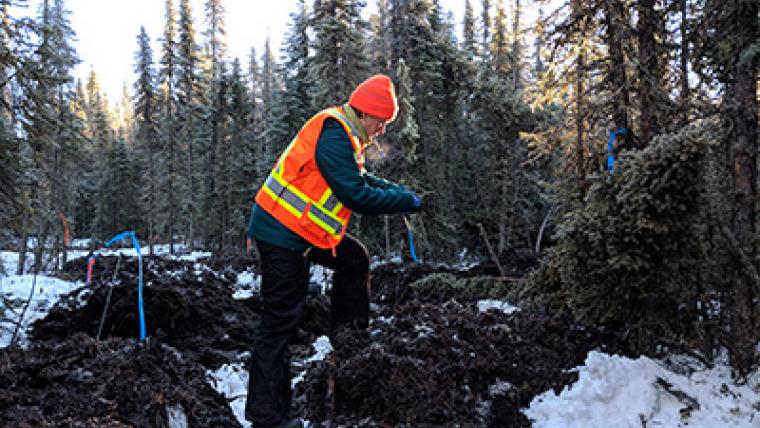Slowing the march of the mountain pine beetle
Having devastated forests covering over 15 per cent of British Columbia, the mountain pine beetle has started attacking trees in Alberta. In an effort to slow it down, scientists from across Canada are studying the problem from different perspectives.
From biology to modelling and beyond, each scientist is helping to build a big-picture understanding of this beetle.
The beetle and the damage done

Larger image
The beetle is about 5 mm long (half the width of your pinky finger) and is a native species to Canada
So far the beetle has:
- devastated about 50 per cent of commercial lodgepole pine in BC since 1990
- moved east into Alberta…a massive migration that continues
- spread to other pines, such as jack pine, in the boreal forest
How are we helping to slow its spread?
Natural Resources Canada is conducting research to help support provinces and territories as they lead their own beetle detection and control programs.
Dive into some of Natural Resources Canada’s research on Mountain Pine Beetle
Exploring the biology Simulating the spread A threat to Eastern White Pines?
Exploring the biology of the mountain pine beetle
Scientists like Dr. Kathy Bleiker are studying the biological limits of the beetle. Next to a lack of food, cold temperatures are the most lethal thing to this insect. In order to predict population trends and determine which regions in eastern Canada are at risk of invasion, we need to know more about how the beetle reacts to both winter and growing-season temperatures.
Kathy’s research aims to answer questions like:
- How cold is too cold for the beetle?
- Does the cold affect the beetle differently based on its age?
- Do the results change depending on which tree species the beetle lives in?
A better understanding of the biology of this beetle will help us understand where the beetle will have the greatest impact and thus where to focus our efforts to control it.
Read more from this scientist!
Simulating the spread of the mountain pine beetle
Larger image
Example pine map with MPB spreading through the landscape
The continued eastward spread of mountain pine beetle now threatens the boreal forests of eastern Alberta, Saskatchewan, and beyond. Dr. Eliot McIntire and Dr. Alex Chubaty are conducting modeling research that aims to predict how the beetle may spread, the extent of outbreaks and the potential effects on the ecosystem.
By using their understanding of the factors that affect the beetle, these scientists run large-scale spatial simulation models of its activity. With an open, nimble software platform, they are updating and expanding models in near real-time as new data are acquired, giving scientists the most up-to-date forecasts of the potential spread and impact of the beetle.
Read more from these scientists!
Is the mountain pine beetle a threat to Eastern White Pines?
The beetle thrives in warmer weather, dry conditions, and in the presence of unhealthy pine trees. Taking this into consideration, Dr. Barry Cooke researches the dynamics of beetle populations by constructing a complex mathematic model.
This model shows that small increases in climate warming, drying and the ratio of unhealthy to healthy pines can have a big impact on beetle populations. These factors will also affect how quickly the MPB spread eastward, where some fear that they may one day threaten the commercially valuable eastern white pine forests of Ontario.
Although we can’t be sure if and when the beetle will spread, Dr. Cooke recommends that we explore ways of coping with unpredictable disturbances, so we can adapt and adjust to changing ecosystems.
Read more from this scientist!
Page details
- Date modified:


